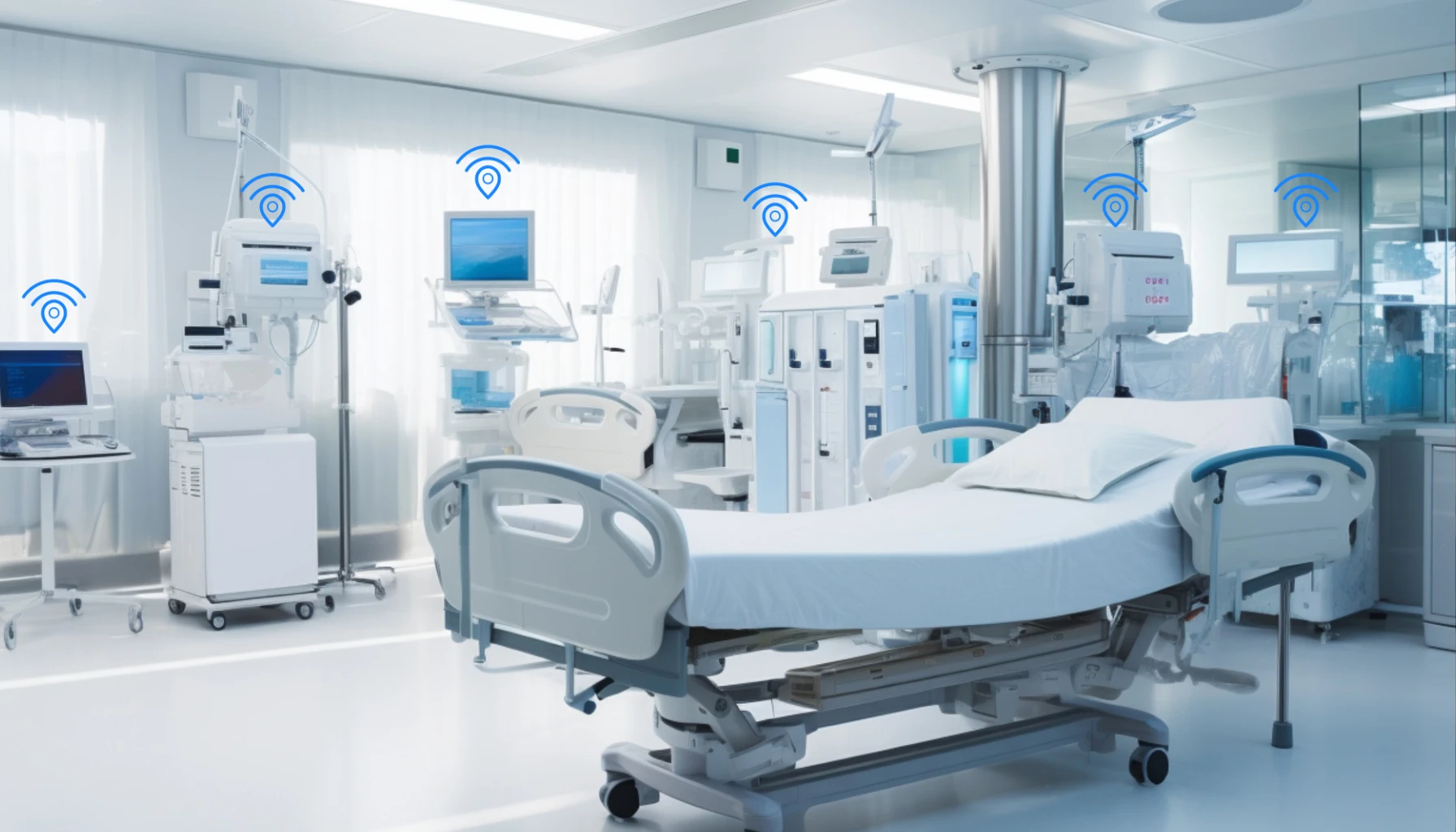Unlocking Indoor Tracking: Challenges and Opportunities with BLE
Author
Mongrov’s Tech Library

Indoor spaces, from warehouses to hospitals, present a unique challenge for tracking assets, people, and equipment. Unlike GPS, which excels outdoors, indoor environments are riddled with obstacles, interference, and structural complexities. To address this, our team has developed the Rapids RTLS engine, a cutting-edge solution that leverages Bluetooth Low Energy (BLE) technology to deliver precise, real-time location insights.
In this post, we’ll explore the use case for indoor tracking, introduce BLE technology, and discuss the challenges of building an effective RTLS solution.
The Use Case for Indoor Tracking
Imagine a large hospital where critical medical equipment like ventilators and infusion pumps needs to be quickly located during emergencies. Or consider a sprawling warehouse where inventory must be tracked across different zones for efficient order fulfillment. These scenarios highlight the importance of **Real-Time Location Services (RTLS)** in streamlining operations and ensuring safety.
Common indoor tracking use cases include:
- Asset Management: Monitoring the movement of equipment, tools, and inventory.
- Personnel Tracking: Locating employees or visitors in large facilities.
- Geofencing: Defining virtual boundaries for areas of interest and generating alerts when they are crossed.
- Emergency Response: Quickly locating individuals or assets in critical situations.
Why BLE?
Bluetooth Low Energy (BLE) has emerged as the go-to technology for indoor tracking systems, and for good reason:
- Energy Efficiency: BLE devices consume minimal power, allowing them to operate for months or even years on a single battery.
- Cost-Effectiveness: BLE tags and gateways are affordable, making large-scale deployment feasible.
- Versatility: BLE is supported by most modern devices, ensuring compatibility across platforms.
In an RTLS setup, BLE devices act as transmitters, periodically broadcasting signals. These signals are picked up by gateways, which calculate the device's position using metrics like the Received Signal Strength Indicator (RSSI).
The Challenges of Indoor Tracking
Despite BLE’s advantages, building an accurate and scalable RTLS is no small feat. Developers must overcome several challenges:
1. RSSI Fluctuations
RSSI values, which indicate signal strength, are inherently noisy. They can vary significantly due to:
- Obstructions like walls and furniture.
- Multi-path interference, where signals bounce off surfaces.
- Changes in device orientation or movement.
2. Multi-Floor Ambiguity
In multi-story buildings, signals from BLE devices can overlap across floors, making it difficult to pinpoint the correct level.
3. Real-Time Processing
Handling the sheer volume of data from hundreds or thousands of BLE devices in real-time requires a robust and scalable infrastructure.
4. Geofencing Precision
Defining accurate geofences in dynamic environments demands precise location data and intelligent filtering to avoid false positives or negatives.
How the Rapids RTLS Engine Tackles These Challenges
Our Rapids RTLS engine is designed to address these issues with a blend of advanced algorithms and scalable data processing. Key features include:
RSSI Smoothing with Kalman Filters:
widely used estimation algorithm that uses a series of measurements observed over time to reduce noise and predict accurate positions, It is designed to estimate the hidden states of the system, even when the measurements are imprecise and uncertain.
Here's the improved section without the code snippet:
Floor Discrimination
Identifying the correct floor in a multi-story environment is crucial for accurate indoor tracking. The **Rapids RTLS engine** employs a grid-style deployment of gateways, capturing floor-specific signals and assigning a confidence value to each gateway’s received data. This confidence-based approach ensures robust floor determination even in challenging environments.
The system evaluates data from multiple gateways by calculating confidence scores for each floor based on signal proximity, strength, and contextual relevance. For example:
- Gateways near a BLE device contribute **high confidence** (e.g., 75 points)
- The gateway with the **highest RSSI** receives a moderate confidence value (e.g., 50 points)
- Other gateways contribute a **normal confidence** score (e.g., 25 points)
By aggregating these confidence scores for each floor, the system determines the most likely floor where the asset resides. This method ensures that the system consistently identifies the correct floor with high accuracy. The confidence mapping not only accounts for signal strength but also incorporates the proximity and contextual relevance of gateways. The result is a highly reliable floor determination mechanism, integral to the performance of our RTLS engine.
Real-Time Data Handling
Real-time data processing has become essential for applications that require immediate insights and actions.
Bytewax, a Python-based stream processing library, offers a powerful way to process data efficiently. Under the hood, Bytewax leverages **Rust**, to deliver high-speed data processing capabilities. It builds on the Timely Dataflow model, enabling distributed, stateful dataflows with high performance and scalability. This combination of Python's ease of use and Rust's performance makes Bytewax an excellent choice for handling large volumes of data in real time, particularly for tasks such as IoT data processing.
Geofencing and Notifications
Implement dynamic geofence creation combined with event-triggered notifications to enhance asset management and ensure timely responses to location-based events.
What’s Next?
In the next part of this series, we’ll dive into the critical role of RSSI smoothing in achieving accurate location tracking. You’ll learn how noise impacts RSSI values and how we use the Kalman filter to transform raw, noisy data into reliable position estimates.
Stay tuned to uncover the technology powering the future of indoor tracking!
